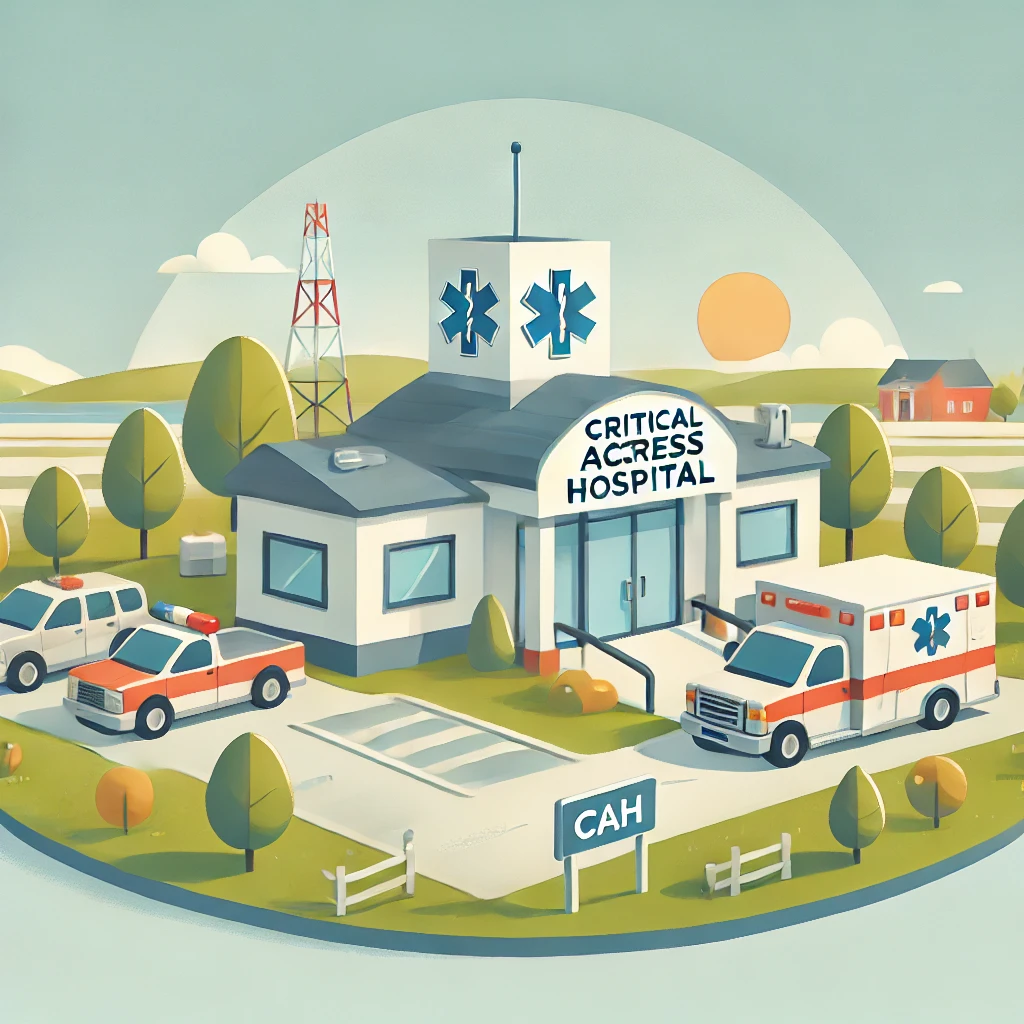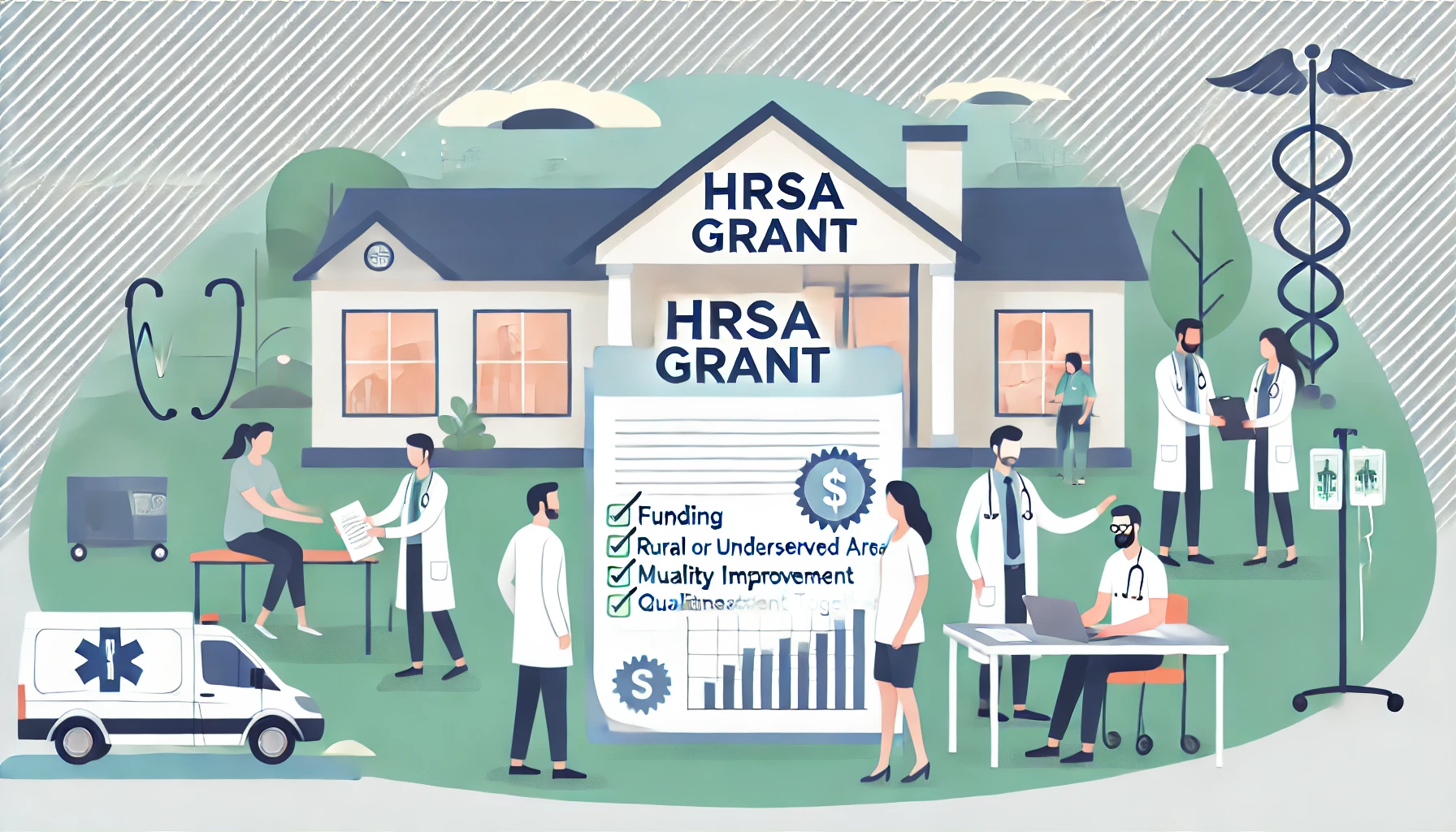
Table of Contents

Understanding Critical Access Hospitals: Definition, Criteria, Requirements, and Medicare Designation
A brief summary of CAH requirements and Medicare Designation.
Critical Access Hospitals (CAHs) play a pivotal role in the United States healthcare system, particularly in rural areas where access to medical services may be limited. Established to ensure that essential healthcare services remain available to underserved communities, CAHs receive specific benefits under the Medicare program. This article delves into the critical access hospital definition, criteria, critical access hospital requirements, and the significance of Medicare CAH designation.
What is a Critical Access Hospital?
A Critical Access Hospital is a designation given by the Centers for Medicare & Medicaid Services (CMS) to eligible rural hospitals. The primary objective of this designation is to reduce the financial vulnerability of rural hospitals and improve access to healthcare by keeping essential services in rural communities. CAHs receive cost-based reimbursement from Medicare, which helps maintain their financial viability.
Criteria and Requirements for CAH Designation
To be designated as a CAH, a hospital must meet specific criteria outlined by CMS:
- Location: The hospital must be located in a rural area or an area treated as rural. Additionally, it must be situated more than a 35-mile drive from another hospital or CAH. Exceptions are made for facilities located more than a 15-mile drive in areas with mountainous terrain or only secondary roads available.
- Bed Capacity: The hospital should maintain no more than 25 inpatient beds. These beds can be used for acute care or swing-bed services, which allow the hospital to use its beds for either acute care or post-acute care equivalent to skilled nursing facility care.
- Length of Stay: The hospital must maintain an annual average length of stay of 96 hours or less per patient for acute inpatient care.
- Emergency Services: The hospital is required to provide 24-hour emergency care services, seven days a week.
- State Certification: The hospital must be designated as a CAH by the state in which it is located.
Meeting thesecritical access hospital requirements is essential for a facility to obtain and maintain its CAH designation.
Medicare Reimbursement for CAHs
One of the significant benefits of CAH designation is the reimbursement structure under Medicare. Unlike traditional hospitals that receive payments based on prospective payment systems, CAHs are reimbursed at 101% of their reasonable costs for most inpatient and outpatient services provided to Medicare patients. This cost-based reimbursement is designed to improve the financial stability of rural hospitals, ensuring that they can continue to serve their communities effectively.
Additionally, CAHs can operate swing beds, allowing them to provide post-acute care services and receive reimbursement for these services under Medicare. This flexibility enables CAHs to meet the varying healthcare needs of their communities without the need for separate skilled nursing facilities.
Benefits of CAH Designation
The critical access hospital designation offers several advantages:
- Financial Stability: Cost-based reimbursement helps CAHs maintain financial viability, which is crucial for hospitals operating in rural areas with lower patient volumes.
- Enhanced Services: The ability to operate swing beds and provide a range of services ensures that patients receive comprehensive care close to home.
- Regulatory Flexibility: CAHs benefit from more flexible staffing and service requirements compared to larger hospitals, allowing them to tailor their services to community needs.
Challenges Facing CAHs
Despite the benefits, CAHs face several challenges:
- Financial Constraints: While cost-based reimbursement provides stability, CAHs often operate on thin margins and may struggle with financial sustainability, especially with changes in healthcare policies.
- Workforce Shortages: Rural areas often face shortages of healthcare professionals, making it difficult for CAHs to recruit and retain qualified staff.
- Regulatory Compliance: Keeping up with changing regulations and maintaining compliance can be particularly challenging for smaller institutions with limited administrative resources.
Conclusion
Critical Access Hospitals are essential components of the rural healthcare infrastructure in the United States. By understanding the critical access hospital definition, critical access hospital criteria, critical access hospital requirements, and the significance of Medicare CAH designation, stakeholders can better appreciate the role these institutions play in delivering accessible, high-quality healthcare to rural communities. While challenges persist, the CAH hospital program continues to adapt, striving to meet the evolving needs of rural populations and ensure that essential medical services remain within reach for all.

Why Every Hospital Needs a Quality and Patient Safety Program
Every hospital needs a quality and patient safety program to reduce harm, improve care, and foster a culture of accountability.
.png)
.png)

HRSA FQHC Requirements: A Comprehensive Guide for Healthcare Providers
When it comes to federally qualified health center requirements, there’s no shortage of regulations, expectations, and—depending on your perspective—opportunities.
.png)
.png)

Unlocking Funding: A Guide to Health Resources and Services Administration (HRSA) Grants
Use HRSA grants to fund external peer review programs that enhance care quality, reduce bias, and support compliance in health centers.
.png)
.png)



.png)
.png)
.png)






.png)